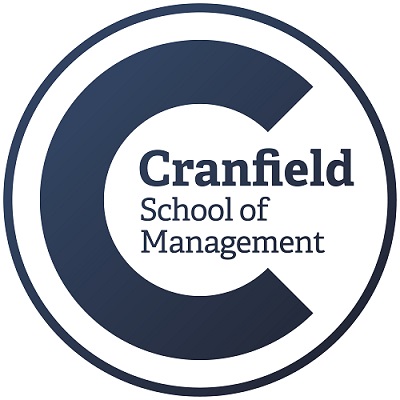- Learning
A Pivot to Online with Long-Term Value for Executives
Cranfield School of Management’s success delivering online learning during the pandemic augers well—not only for the now, but for the future of executive education
First, a widespread familiarity with Zoom and other virtual meeting platforms has built up through the lockdown and greatly increased people’s confidence in working and interacting remotely. Perceptions of what can be achieved in a digital meeting space have shifted. Secondly, with the rise in popularity of distributed forms of leadership and flatter management structures, there is a growing need to spread learning wider and deeper through teams and businesses, and to develop leadership skills at all levels.
This moment of change, in attitudes to interacting online and towards new leadership models, paves the way for greater adoption of online learning right across executive education. It is a fascinating moment for the sector as the effects on how executives and organizations learn could be transformational.
A successful transition from traditional learning behaviours to new ones hinges, in many respects, on the business schools and how they adapt their existing learning portfolios to online, how well their faculty react to this change, and how well program participants respond to the online experience. The recent evidence from Cranfield School of Management is encouraging.

Graham Bell, Director of Digital Education at Cranfield School of Management, reports that not only has Cranfield been able to deliver both open and customised executive programs successfully through the lockdown, but the response from participants has been very positive. “People’s expectations of what we could do online was that we weren’t going to be able to replicate the face-to-face experience in any way.” In fact, the feedback received has shown clients to be really pleasantly surprised. Programs are being delivered to a high quality, and participant satisfaction levels are high.
………………………………………………………………………………………………………..
Learn more about Cranfield School of Management’s Live Online Executive Development programs here
………………………………………………………………………………………………………..
Despite Cranfield School of Management being part of a university renowned for its advanced technology, Bell and his team have opted to use the tried and tested, and now familiar, Zoom delivery platform—rather than considering avatars, augmented reality, or other hi-tech wizardry. “Zoom offers as close to a face-to-face experience as possible, with the ability for everybody to be on camera, with up to 50 people all on one screen,” says Bell. “From a faculty or associate’s perspective, they're able to visually engage with a participant straight away. Some of our faculty are using the camera to check in with people, gauging quick polls with thumbs up and waves for example.”
Breakout sessions—a key part of the physical in-class experience—have worked particularly well through Zoom. “We've had some participants say that they prefer the digital breakout rooms to the face-to-face breakout rooms because you don't get a lot of the distraction that goes around it.”—people disappearing off to the coffee machine or phoning the office. Furthermore, by randomly selecting breakout groups, participants get the chance to interact with a wider range of people than might normally be the case.
Well before the COVID-19 crisis Cranfield had been building a highly digitally focused executive education team....great at working at that intersection between the technology and the faculty
Because online participants do not get the same social stimulus at coffee or lunchtime, the platform is left open for people to continue conversations during breaks and after the main sessions. “In most sessions,” says Bell, “you get a group of people that just want to have a chat because they haven't seen each other for a while or they want to find out a bit more about what they're doing.” This is a powerful way of bonding the group and furthering the learning.
From well before the COVID-19 crisis Cranfield had been building a highly digitally focused executive education team, which Bell praises for “being great at working at that intersection between the technology and the faculty.” Recently they have trained 500 faculty and associates, in less than three weeks, on how to use the technology and how to engage with participants—taking as read from the outset that “people won't be engaged by a series of PowerPoints online. We need to find a different way to work with them."
One solution that uses Zoom functionality, is for faculty to present in front of virtual backgrounds with models and visual tools behind them. This is all part of a drive to deliver engaging sessions that are “much less about going through a PowerPoint deck, and more about getting people involved in the conversation, explaining how the models work and applying that to participants’ own context. We bring in highly specialised, highly customised case studies based on the organizations we are working with, and then roleplay around those.”
This difficult period has offered a valuable opportunity for Cranfield to fast track its own understanding of the potential for online learning and to gauge participants’ reactions to different approaches. As part of the ongoing process Bell’s team is doing a lot to review and measure their progress, with one of the team being responsible for training the faculty as the approaches used are developed and refined.

Camilla Jonsson, Director Sales and Marketing of Cranfield Executive Development, points to the team’s deep understanding of online learning design, that has allowed it to combine a mix of the cognitive and the behavioural to create innovative new program structures. For Jonsson, the use of online white boards, polls and other learning strategies have proved even more successful than she hoped—as well as “engaging, personal, and fun”, in the words of recent participants.
Benefits of online executive education, from a client’s perspective, will ensure that once the economic shock of the lockdown recedes, online will continue to play a much-increased role
While the efficacy of online executive learning may have been proved during the pandemic, the environment is of course very difficult. Many clients are struggling to restart their businesses, many contacts have been furloughed, and many have yet to find the time or space to contemplate their executive development needs.
Jonsson believes that several obvious benefits of online executive education, from a client’s perspective, will ensure that once the economic shock of the lockdown recedes, online will continue to play a much-increased role. The most obvious benefit is in cost saving—the cost of travel and accommodation, and also the cost of having executives away from work. Another benefit, at a time when organizations are introducing home working and more flexible work patterns, is that online learning provides a great way to connect the organization, bringing people and teams back together. A less obvious benefit, but one that Jonsson sees as important, is that online delivery allows for a more egalitarian, less hierarchical, even more humanized experience of corporate learning.
In the long run, potentially the greatest impact of online delivery will be in how it allows organizations to offer high-quality learning at all levels, far lower down than the traditional C-suite and senior levels—facilitating the distributed leadership that many progressive organizations are now adopting.
Through this recent experience, Cranfield has found that technical programs and those aimed at a particular function adapt very well to online delivery—programs such as Strategic Sales Leadership, Key Account Management Best Practice, Leading Complex Projects and Programs, and Finance for the Boardroom. On the other hand, transitional programs that involve deeper psychological intensity—such as Talent Development, or High Performance Leadership—present challenges for fully online delivery. Consequently, post-lockdown, the school plans to run these as blended programs, with the online element combined with face-to-face sessions.
Potentially the greatest impact of online delivery will be in how it allows organizations to offer high-quality learning at all levels
Another discovery from the lockdown experience, for program designers at Cranfield, has been that executive coaching, and the coaching element within courses, can be delivered very effectively online.
For Cranfield, the pandemic has had a fast-tracking effect on the development of online program design. As a top global management school Cranfield was already well down the path of digital transformation, but has still had to create, in a few short weeks, what would otherwise have taken many years.
For Bell and Jonsson the positive reaction of faculty members has been key, and every effort has been made to ensure a smooth and successful move to online by and for faculty. Every effort too has been made to retain the benefits associated with in-person programs—networking with like-minded peers, solving personal challenges with support from your fellow participants, real-time, personalized feedback from program directors and peers—all of these elements are here and operational within the online space.
In addition to retaining the benefits of in-person, there has been a focus on accentuating the benefits of online; from interactivity and collaborative working, to the flexibility and ‘access anywhere’ of virtual learning. Engaging sessions are absolutely vital to manage attention in an online executive audience, and Cranfield has looked to incorporate a diverse range of learning styles to achieve this, with interactive peer led discussion, group work, and on demand content.
Forged in the crucible of a dark time for all, the lessons learnt through this extremely testing period will greatly enhance the operational delivery of what the Management School and its clients are able to achieve together well into the future.
……………………………………………………………………………………………………………
Upcoming Live Online Programs at Cranfield:
Starts 11 September Business Growth Programme
Starts 14 September Leading Complex Projects and Programs
Starts 23 September Leadership in Disruptive Times
Starts 28 September Strategic Sales Leadership Program
Starts 30 September Key Account Management Best Practice
Starts 6 October Marketing Strategy and Planning
Starts 6 October Finance for the Boardroom
Starts 12 October Strategy Execution: Defining Value – Delivering Performance
Starts 8 November Director as Strategic Leader
ARTICLES YOU MIGHT LIKE
VIEWPOINT
For Thomas Misslin, transformation rather than training is the aim of executive education at emlyon business school
DEVELOPING LEADERS QUARTERLY MAGAZINE AND WEEKLY BRIEFING EMAILS


































